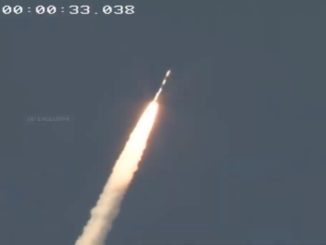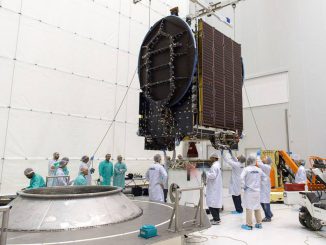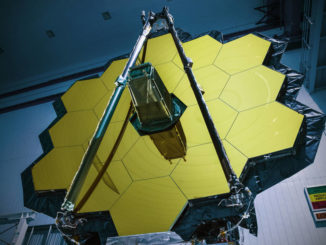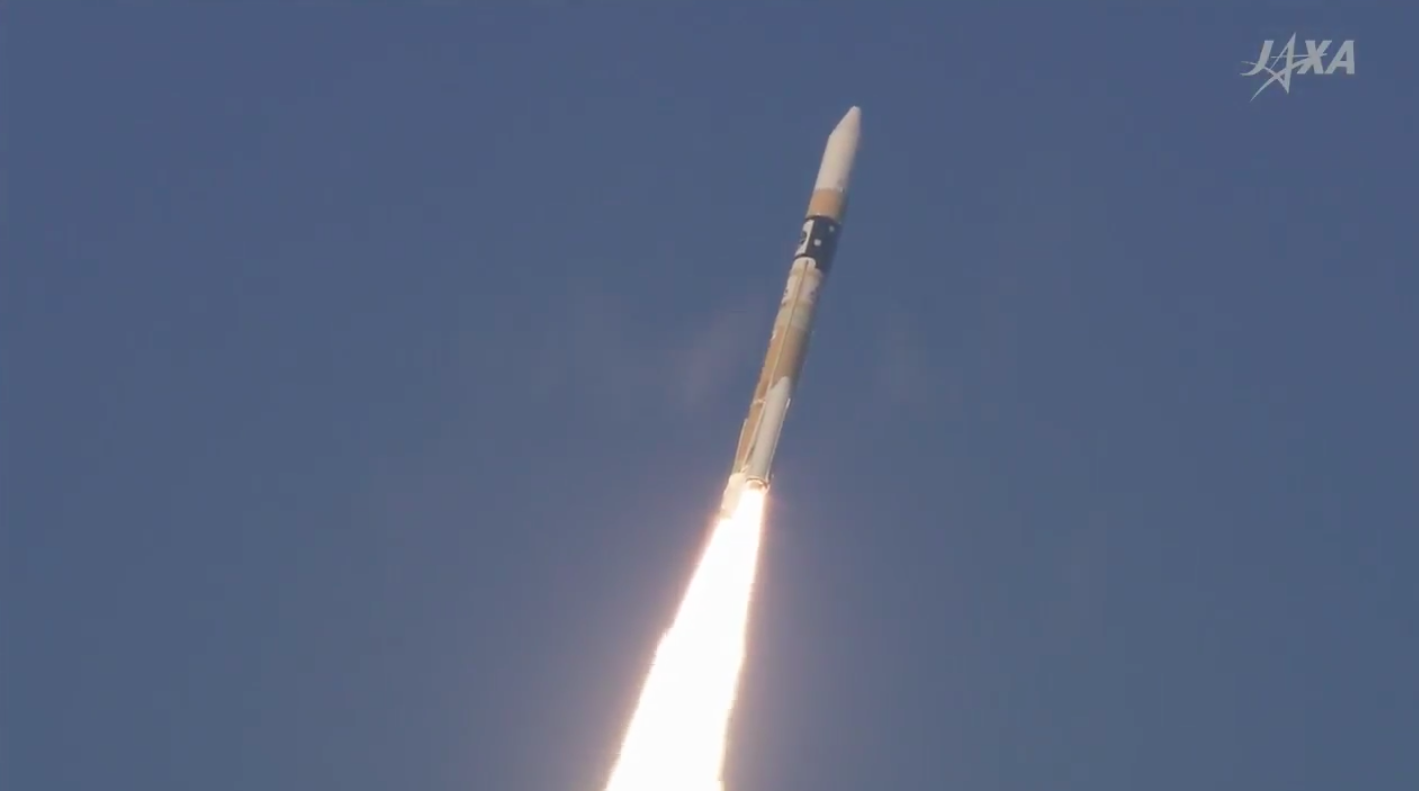
Japan launched a pioneering observatory with X-ray vision Wednesday to peer into the mysterious, light-starved neighborhoods around black holes and study the genesis of galaxies and other cosmic mega-structures billions of light-years from Earth.
Starting a three-year mission with a fiery ride into orbit, the observatory lifted off at 0845 GMT (3:45 a.m. EST; 5:45 p.m. Japan Standard Time) Wednesday aboard an H-2A rocket.
The 174-foot-tall (53-meter) launcher lit a hydrogen-burning LE-7A main engine and twin solid rocket boosters, then darted through scattered clouds just before sunset at Tanegashima Space Center, a scenic seaside spaceport in southwestern Japan.
Fourteen minutes later, H-2A rocket’s second stage engine shut down and the Astro-H spacecraft — a satellite weighing nearly three tons — separated from the launcher, according to commentary on a webcast of the flight by the Japan Aerospace Exploration Agency, or JAXA.
“The launch vehicle flew as planned, and at approximately 14 minutes and 15 seconds after liftoff, the separation of Astro-H was confirmed,” JAXA said in a press release announcing the success of Wednesday’s launch.
The rocket’s computer aimed to place the satellite in a circular orbit at an altitude of about 357 miles, or 575 kilometers, angled 31 degrees to the equator. Tracking data from the U.S. military indicated the rocket achieved an orbit close to preflight targets, and an update from JAXA indicated Astro-H was circling Earth within a few thousand feet of its intended altitude.
A few hours after the launch, JAXA confirmed the Astro-H spacecraft’s two solar panels opened as designed to generate electricity for the satellite, and the space agency announced the mission would be renamed Hitomi, which means “eye” or “pupil” in Japanese.
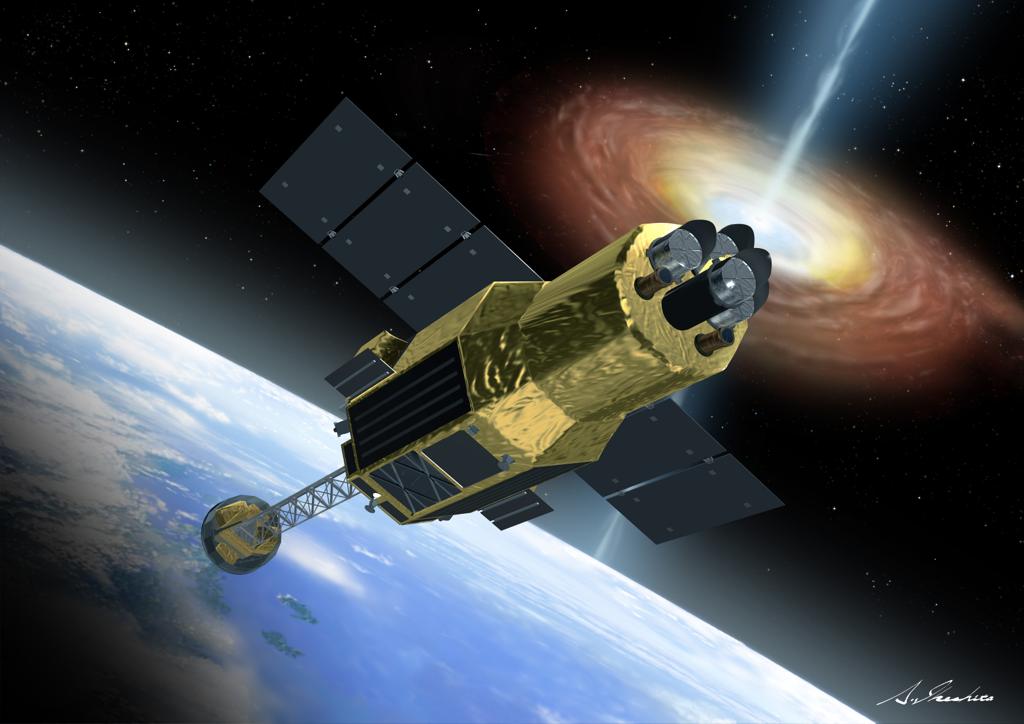
“Astro-H is the eye to study the hot and energetic universe,” JAXA said in a press release. “Therefore we name Astro-H, ‘Hitomi.’ The word Hitomi generally means ‘eye,’ and specifically the pupil, or entrance window of the eye — the aperture!”
The observatory will extend a boom holding Hitomi’s hard X-ray imagers to a length of 20 feet — more than 6 meters — during the mission’s commissioning phase. The rest of Hitomi’s instrument suite — comprising four telescopes and four instruments — are mounted inside the spacecraft’s main body.
Hitomi’s X-ray sensors can see cosmic phenomena invisible to the human eye, seeing through veils of gas and dust that obscure observations with conventional telescopes.
“We see X-rays from sources throughout the universe, wherever the particles in matter reach sufficiently high energies,” said Robert Petre, chief of Goddard’s X-ray Astrophysics Laboratory and the U.S. project scientist for Astro-H. “These energies arise in a variety of settings, including stellar explosions, extreme magnetic fields, or strong gravity, and X-rays let us probe aspects of these phenomena that are inaccessible by instruments observing at other wavelengths.”
Hitomi is Japan’s sixth X-ray astronomy satellite, following up on a series of missions since 1979 that resolved the universe’s most energetic regions.
X-rays emitted by hot plasma hold clues about the inner workings of the mysterious black holes, the lives of galaxies, the structure of galactic clusters and where clumps of dark matter may reside in the universe.
Formed by the powerful supernova explosions of old stars, black holes give off X-rays as they ingest matter, sending beams through the universe that can only be detected by telescopes like the sensors aboard Hitomi.
“This is the next, big X-ray observatory,” said Andrew Szymkowiak, a Yale senior research scientist in astronomy and physics who is part of the Hitomi mission. “We’re going to clean up on new information about galaxy clusters and supernova remnants.”
Hitomi’s launch follows Japan’s series of X-ray missions — most recently the Suzaku observatory launched in 2005 — and large X-ray telescopes like Chandra and XMM-Newton operated by NASA and the European Space Agency.
Tadayuki Takahashi, Hitomi’s chief scientist at JAXA’s Institute of Space and Astronautical Science, said Chandra — the X-ray astronomy community’s flagship observatory — can take better images, but the new Japanese mission will attempt to measure the composition and motion of matter around black holes with unparalleled precision.
A “microcalorimeter” aboard Hitomi developed jointly by Japanese and U.S. scientists is chilled to 50 milliKelvin (minus 459.58 degrees Fahrenheit, or minus 273.1 degrees Celsius), a fraction of a degree above absolute zero. Super-cold liquid helium and a series of mechanical and magnetic refrigerators will keep a 36-pixel detector array chilled for at least three years.
Nestled inside Hitomi’s Soft X-ray Spectrometer instrument, the detectors will register X-ray photons and measure their energy with high sensitivity, collecting data that will tell astronomers about the composition and velocity of the super-heated matter that produced the light.
The detectors must be cold to sense the faint light from faraway objects. When the light hits the detectors, they will measure a slight temperature rise. How much the temperature rises tells astronomers about the source of the X-rays, according to scientists at Yale University.
The microcalorimeter will be the first sensor of its kind to make astronomical measurements in space. First developed in the 1980s, the technology was supposed to fly aboard a NASA observatory that eventually became Chandra, which launched in 1999, but cost concerns kept the sensor off the mission.
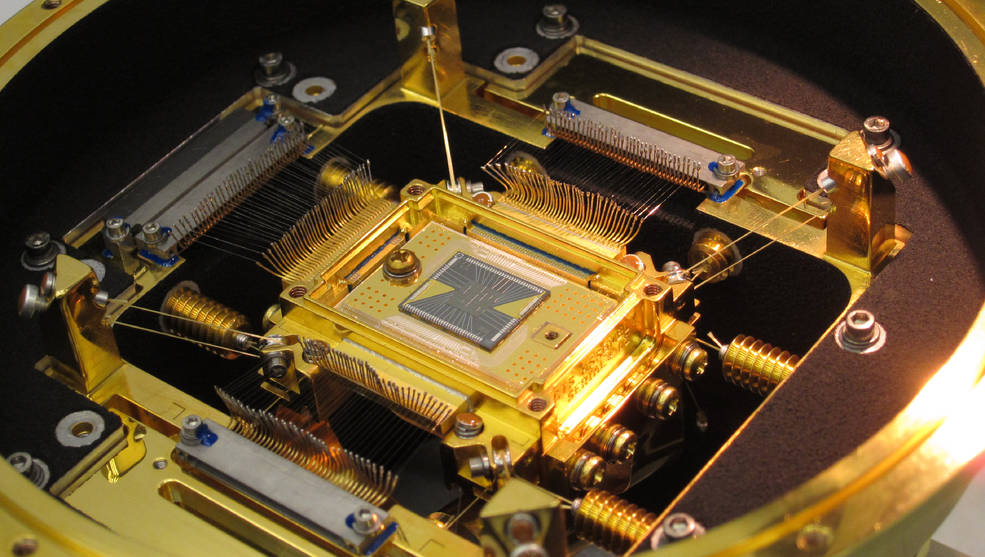
Credits: NASA’s Goddard Space Flight Center
Earlier versions of the Soft X-ray Spectrometer launched on two Japanese X-ray missions in 2000 and 2005, but the first was destroyed in a launch failure, and the second ran into trouble weeks after liftoff and ran out of liquid helium coolant before observations began, rendering the instrument useless.
Scientists hope for a better outcome this time.
“This has been an extraordinary undertaking over many years to build this powerful new X-ray spectrometer jointly in the U.S. and Japan,” said Richard Kelley, the U.S. principal investigator for the Astro-H collaboration at NASA’s Goddard Space Flight Center. “The international team is extremely excited to finally be able to apply the fundamentally new capabilities of the SXS, supported by the other instruments on the satellite, to observations of a wide range of celestial sources, especially clusters of galaxies and black hole systems.”
“SXS will be the first instrument capable of high spectral resolution for extended sources such as supernova remnants, normal galaxies and clusters of galaxies,” Takahashi told Spaceflight Now. “It will also have the highest resolution and highest sensitivity of all the spectrometers at energies above (2,000 electron volts). This feature makes the SXS particularly sensitive for the measurement of velocities of celestial x-ray sources, reaching down to 50-100 km/sec (100,000 to 200,000 mph) in some cases.”
That velocity may seem incomprehensible, but it is a fraction of the speeds at which matter moves in the intense gravity field around black holes, super-compact objects from which not even light can escape.
Poshak Gandhi, a researcher at Southampton University in Britain, will use Astro-H to study how black holes collect matter and grow in size, and probe the interaction between galaxies and the supermassive black holes at their cores.
“One part of (our) research focus at Southampton is the study of growing supermassive black holes at the centers of nearby galaxies,” Gandhi said in a press release. “As Superman’s X-ray vision allows him to peer through walls, so Astro-H’s X-ray vision will be able to penetrate the veiling clouds surrounding black holes and will also be sensitive to any light reflected and scattered by these clouds.
“This, in turn, will allow us to determine all kinds of important properties of the interstellar clouds and the black holes that are hidden within them, including how powerful the black holes are, how much matter there is in the veiling clouds, and what kind of motion the clouds have,” Gandhi said. “This will give us important insight into the growth of these black holes and their interaction with the large scale galaxy.”
Hitomi’s instruments cover a wide range of energies on the electromagnetic spectrum, from so-called “soft” X-rays around 300 electron volts to “soft” gamma rays up to 600,000 electron volts. For comparison, visible light photons are measured around 2 or 3 electron volts, according to NASA.
The satellite’s hard X-ray telescopes and imagers are similar to the instrument aboard NASA’s NuSTAR satellite launched in 2012, while Hitomi’s highest-energy detector tuned to study gamma rays is an upgrade on sensors aboard Europe’s Integral space mission, Takahashi said.
“Astro-H will extend the frontier of high-resolution X-ray spectroscopy,” Takahashi told Spaceflight Now. “While both Chandra and XMM have pioneering high-resolution spectral instruments, their smaller energy band pass and limited spectroscopic capability for extended sources, and at higher energies, have been limiting factors.
“Astro-H will determine the velocity field of the gas in clusters of galaxies and allow sensitive and precise measurements of how clusters grow and evolve,” he said. “Measuring the chemical composition of the gas in active galaxies should allow measurements of the strength of the winds in these sources, which are predicted to be one of the main players in the formation of galaxies.”
Takahashi said the first three months of Hitomi’s mission are dedicated to the initial startup of the satellite and its instruments, followed by a six-month performance verification phase. Regular observations should begin about nine months after launch.
The Hitomi mission cost Japan approximately 31 billion yen, or about $270 million, Takahasi said in an email response to questions from Spaceflight Now. Scientists from NASA, Canada and Europe also contributed to the project, pushing Hitomi’s total cost to near $400 million.
Exact cost figures for Hitomi’s international contributions were not available.
Email the author.
Follow Stephen Clark on Twitter: @StephenClark1.

